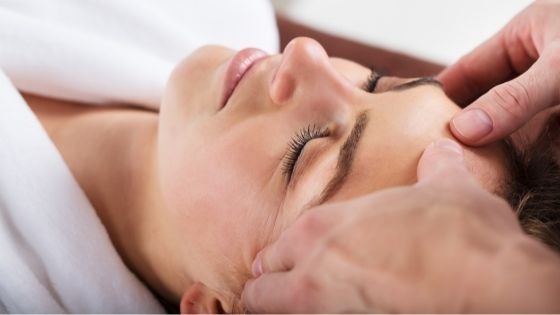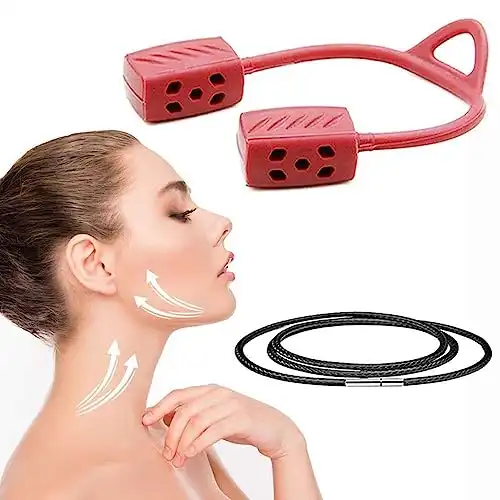Everything You Need To Know About Sloped Forehead

What is a sloped forehead? It is a slanted forehead, sometimes associated with a heavy brow ridge. A sloping forehead is an unusually pronounced forehead that can be genetic or caused by an injury. We occasionally link a sloping forehead with a higher-than-average brow ridge.
A sloped forehead, which denotes a noticeably pronounced or slanted forehead often paired with a higher-than-average brow ridge, can carry specific forehead meanings regarding genetics or possible impacts from an injury.
The difference in the shape of your forehead is not just from tilting your head. There is a physical difference. The person on the left has a sloped forehead, and the person on the right has a vertical forehead.
The cause of craniosynostosis is an increase in the size of the frontal bone. Sometimes it happens with other facial bones.
The slope of the forehead may vary, but it typically starts at the hairline and slopes down to the eyebrows.
The result is a drooping appearance of the eyes and brows and a change in facial structure.
A person with this condition will usually have to wear headgear for several months to correct their appearance and prevent further damage from occurring.
However, if untreated, this condition could worsen over time due to loss of bone density or other factors such as trauma or disease.
People born with sloping foreheads often have issues with self-confidence because they feel embarrassed about how they look, but all hope isn't lost.
Many people have successfully undergone surgery to correct deformities and restore their natural beauty.
Why does my forehead slope back?
People with naturally sloped foreheads are often the product of generations of relatives with similar features.
It is also caused by trauma to the head or face area, specifically in the front-central area.
Not treated can lead to deformity and loss of frontal bone density.
Symptoms/signs of sloped forehead
The drooping of the eyes and brows and changes in the facial structure associated with headgear may progress over time. Losing bone density due to wearing headgear for lengthy periods might worsen with time. Self-esteem concerns could develop.
Prognosis of the sloped forehead
When treated early, the prognosis is good. However, if left untreated long-term, this condition could worsen over time due to loss of bone density or other factors such as trauma or disease. Therefore, you will need further treatment.
Can you fix the sloped forehead?
Is it possible to fix a sloped forehead? Oh, ABSOLUTELY. You can do that by mewing from an early age or have surgeries like forehead augmentation to reshape your skull shape.
How to fix a sloped forehead

Recovery usually doesn't take longer than a week or two. But, of course, you'll have to be careful with your headgear during that time to avoid any further damage from occurring.
You probably know someone who has a rather prominent forehead. Most of us have heard jokes about how they must be brilliant, but what if you are the one with a prominent forehead? Well, that's not so funny.
Forehead augmentation
The best way to fix a sloped forehead by forehead contouring is aesthetic plastic surgery. The procedure can be done in-office, under topical or local anesthesia, and takes about 30 minutes.
Incisions are made along the hairline behind the ears and upper cheeks during the procedure.
A strip of bone from your chin is removed and cut in two pieces for each side of your head before it's filled with silicone gel implants to correct that loss of volume.
They remove the scar tissue, stitch the skin together, and trim down the excess skin.
Forehead reduction
Forehead reduction is a popular surgery performed to make the facial bones less prominent. The procedure involves creating two incisions that border on either side of what will be "removed."
In this case, your hairline creates an opening to remove extra facial skin tissue from the front view. But sometimes, patients refer to it as "hairline surgery" since one benefit can include shaving off some thickness/length at their temples which makes them look slimmer!
Although these procedures have high success rates, they are no minor considerations. It would help if you did your research before even considering them!
Ensure that a board-certified surgeon will be operating on and for you with plenty of experience. But this is not the only thing to consider when selecting an incision lift procedure or any invasive surgery in general.
Mewing
Mewing is the process of reshaping one's face with the mewing exercise. Slap your tongue to the roof of your mouth. And you're good to go.
Well, there's a bit more to it than that, like all mewing beginners. First, you want to know if you're mewing correctly, so you're not wasting months of your time so that you can transform your whole face and jawline.
So, like thousands of others out there right now, I'm going to show you the tongue posture you need for mewing to work.
And this is the part you won't find anywhere else. I'm going to show you how it is. If you can't do it, go down the sub and hit the bell icon if you want my help to get the best jawline genetically possible for you.
What is the perfect mewing posture? That is what is happening inside the mouth of an experienced mewer.
Stand up straight with your shoulders back.
Simple enough. Your mom's been telling you to do this your whole life.
Close your mouth slightly with your bottom teeth
Lightly close your mouth with your bottom teeth slightly behind your top teeth. It's best if they're somewhat touching at the back, but it's okay.
If they're slightly apart, don't clench your teeth together. It's terrible for your teeth, and it doesn't help your result.
Place your tongue behind your back teeth.
Your tongue rests behind your back teeth, and the back part of your tongue is engaged against the palate. So it's not blocking the throat, which is a common problem. I think a lot of people have more on that later.
Breathe through your nose
You've got to breathe through your nose because you can't mew without nose breathing.
You can't have your mouth closed and breathe through it. Does that make sense? People who leave their mouths open naturally drop their tongues away from this position as they breathe.
If you can't breathe through your nose, you can't mew. Chewing is done purely with the teeth.
The cheeks aren't used to move food around. That's the tongue's job, though, with your teeth.
Swallow
Swallowing, that's all the work of your tongue. Again, this is an essential part of mewing. Once you've ground down food with your teeth, or you have saliva or liquid, the tongue does a sweep like this, and it presses up against the palate, creates suction, and it pushes the liquid contents down the throat.
You don't have any help from your jaw muscles, cheeks, or lips. You want to swallow just using your tongue swallowing. Almost shouldn't be visible from the outside experience mirrors.
How often do I have to perform mewing exercises?
I recommend you to do this throughout the day. You have to do it every day for the rest of your life, apart from when they're eating, drinking, or talking, even when they're sleeping.
They're breathing through the nose, and their tongue is pressed up against the upper palate. So yes, mewers mew when sleeping as well.
Now, if you can do this and stick to it, the shape of your face will improve, and your teeth might even get straighter.
That's the perfect mewing tongue posture, but what if I can't do the ideal tongue posture? I don't do it proper place. You have. Do you know if you're doing the correct?
Mewing tongue posture. It's a common question because you can't see in people's mouths and see how they're doing it. And you also can't see in your side your mouth and see what it looks like in there.
There are a few ways to know what it feels like when your tongue is up against the palate in the correct posture, the same technique.
You've probably heard this one, and you've probably even tried it, say the word saying and hold the position that your tongue is.
Okay. When you hold the ING and make that and G sound at the end of seeing. Your tongue has to be up against the pallet to make that sound.
So that's roughly the position you want to hold your mewing. You're doing it, man. When you do that, you're telling me it's up against the pallet, and it's not touching your teeth at all.
How many times a day do I have to do mewing?
So try doing this like 10 times a day, every once in a while. Just do it, hold it and get used to what your tongue feels like.
Remember to breathe the swallow hold. Now, this is when you swallow and hold your tongue in that position.
So my advice would, this one is don't do it. This one leads to confusion because people swallow and then try and hold it.
And that blocks the back of their throat. And then people can't breathe. So when you're moving correctly, you can breathe.
So this isn't it, the chin up, hold this one. I discovered it to be effective, especially in the early stages of mewing when you have no idea what you're doing.
Start by lying down on your stomach. And then try and put your whole tongue up against your upper palate.
I found there's way more manageable like this actually to get your tongue up against your palate. Because when your head is pointing downwards, your tongue has to kind of curve.
And that's hard on the muscles. So when your head is up like this, it's natural for your tongue to straighten out and sit up against the palate.
So it's a great way to get used to what it feels like and strengthen your tongue's back muscles.
That is why back posture is super important because with the correct back posture, your chin is op anyway, and it makes it easier for your tongue to sit in this position. Worth a try if you're a beginner.
Are sloped foreheads attractive?

The Ancient Greeks prized the look of a protruding forehead, which would make it seem more feminine.
It's interesting to note that this desire for femininity is deeply embedded in our culture. Although facial features with a prominent brow ridge are also masculine characteristics.
And if you examine the marketing efforts of cosmetic companies against this supposed aesthetic ideal, you can see how they frame their beauty products as tools for self-actualization.
One often must become a particular type of person to be accepted by society.
What is flat face syndrome?
The name flat face syndrome has been used in many different ways to describe various conditions. But it most often refers to the characteristic facial appearance of narrow pallet shape caused by distorted facial bones.
Char syndrome is a rare genetic disorder. It can cause the person to have a characteristic facial appearance. The features of a flat face include flattened cheekbones and a flat nasal bridge.
Typically, this condition starts when babies are six months old and can evolve into adulthood. Flat face syndrome can also happen when one parent has what's called "Beckwith-Wiedemann syndrome" (BWS) or "paternal unshared twin phenomenon."
Many cases come from people with craniofacial abnormalities because their facial growth was stunted at an early age due to congenital conditions like cleft palate, Down syndrome, or microcephaly.
FAQs
What exactly is a sloped forehead?
A sloped forehead is a noticeable angle between the hairline and the brow bone. It is often associated with a more masculine look due to the broad brow ridge, a sexually dimorphic trait.
Does a sloped forehead indicate anything about intelligence?
Interestingly, no. While certain cultures, like the Chinese, view a broad forehead as indicative of high intelligence, there's no scientific proof linking the shape or slope of one's forehead to cognitive ability or intelligence. The structure of the brain and its functional capacities are not directly affected by the shape of the cranial vault.
How does a sloped forehead affect my facial profile?
Having a sloped forehead can contribute to a more pronounced or angular facial profile. A high hairline or a more pronounced brow ridge can create the illusion of a more forward face. However, whether this is perceived as attractive or unattractive can vary significantly among different cultures and individuals.
I'm not comfortable with my sloped forehead. Is there anything I can do to change its appearance?
Certainly, there are options available for you. Forehead contouring or reshaping, a surgical procedure performed by cosmetic surgeons, can change the shape and size of your forehead, making it more ideal according to your preference. It's crucial to consult with a specialist to discuss the benefits, risks, and costs before you decide to undergo such a procedure.
Does the practice of mewing have any effect on the shape of my forehead?
Mewing, which involves proper tongue posture, theoretically can influence the development of facial bone structure, potentially including the forehead. By maintaining proper tongue posture against the roof of the mouth throughout the day, some people claim that the overall shape and alignment of the face, including the forehead, can be subtly influenced over time.
What about non-surgical options?
Non-surgical treatments are indeed available. These might involve exercises, physiotherapy, or changes in posture and facial habits. However, the results from these methods are usually less dramatic and take longer to manifest.
How does the recovery process look after a forehead contouring surgery?
Typically, patients can return home a few hours after the surgery, but complete recovery might take several weeks. It's essential to adhere to your surgeon's advice during this period to ensure optimal healing and results. Pain, swelling, and some discomfort might be expected initially but should diminish over time.
How does a sloped forehead correlate with gender differences?
Typically, men have more sloping foreheads than women due to the presence of a more prominent brow ridge. In contrast, women's foreheads tend to be more vertically aligned. However, there's significant variability in forehead shapes and slopes within both genders.
How does a sloped forehead relate to our ancestors?
Interestingly, our prehistoric ancestors had highly sloping faces, with prominent brows and noses. Despite their physical similarities to us, they had significantly larger brains. However, the sloping forehead seen today differs from what our ancestors had.
Is a sloped forehead a result of facial bone structure or growing beyond a certain age?
A sloped forehead is largely determined by genetics and your underlying facial bone structure. While changes in facial structure occur as you age, your genetic blueprint plays a crucial role in determining the slope of your forehead, regardless of age.
Can the shape of my head change if I tilt it regularly?
Your head position can indeed influence how your face looks from different angles, and practicing proper posture may help improve your overall appearance. However, the tilt of your head in itself doesn't permanently change the shape of your skull or the slope of your forehead.
Does a convex face have a connection with a sloped forehead?
A convex facial profile can often coincide with a sloped forehead. This type of facial profile typically has a protruding jaw or nose, creating an overall more angular look, often complemented by a sloped forehead. However, whether a face is convex, concave, or flat doesn't solely determine the slope of the forehead.
Does my jaw and neck position affect the slope of my forehead?
While your jaw and neck position can affect the overall appearance of your face, they don't directly impact the slope of your forehead. However, proper alignment of the jaw and neck can enhance your overall facial harmony and balance.
Does the position of the brow bone influence the slope of the forehead?
Absolutely. The brow bone is a key determinant of the forehead's slope. A prominent or protruding brow bone can create a more pronounced slope, whereas a less prominent brow bone may result in a flatter forehead appearance.
Is the forehead a sexually dimorphic trait, like the brow ridge?
Yes, the forehead can show sexually dimorphic characteristics. Typically, men have more sloping foreheads due to a prominent brow ridge. In contrast, women's foreheads tend to be more vertically aligned. However, these are general trends, and there can be a wide variety within each sex.
Conclusion
I hope this article has given you some insight into how the shape of your forehead can affect your appearance. However, keep in mind that it's not just about beauty.
If you have a sloped forehead, there are ways to dress and style yourself so people will think more highly of you.
DISCLAIMER: buildyourbody.org does not provide medical advice, examination, and diagnosis.
Medically reviewed and approved by Nataniel Josue M D.

